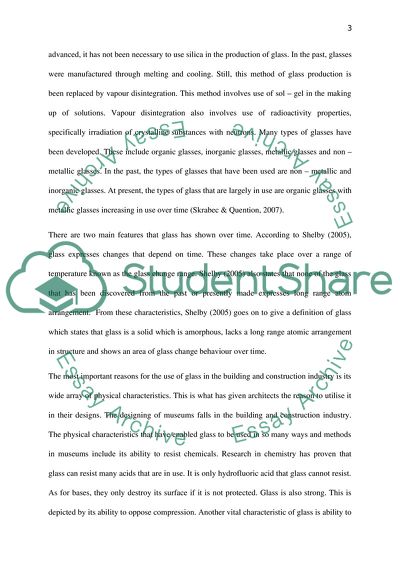Cite this document
(The Use of Glass in Museums From Past to Present Coursework Example | Topics and Well Written Essays - 4250 words, n.d.)
The Use of Glass in Museums From Past to Present Coursework Example | Topics and Well Written Essays - 4250 words. https://studentshare.org/architecture/1823194-the-use-of-glass-in-museums-from-past-to-nowadays
The Use of Glass in Museums From Past to Present Coursework Example | Topics and Well Written Essays - 4250 words. https://studentshare.org/architecture/1823194-the-use-of-glass-in-museums-from-past-to-nowadays
(The Use of Glass in Museums From Past to Present Coursework Example | Topics and Well Written Essays - 4250 Words)
The Use of Glass in Museums From Past to Present Coursework Example | Topics and Well Written Essays - 4250 Words. https://studentshare.org/architecture/1823194-the-use-of-glass-in-museums-from-past-to-nowadays.
The Use of Glass in Museums From Past to Present Coursework Example | Topics and Well Written Essays - 4250 Words. https://studentshare.org/architecture/1823194-the-use-of-glass-in-museums-from-past-to-nowadays.
“The Use of Glass in Museums From Past to Present Coursework Example | Topics and Well Written Essays - 4250 Words”. https://studentshare.org/architecture/1823194-the-use-of-glass-in-museums-from-past-to-nowadays.


